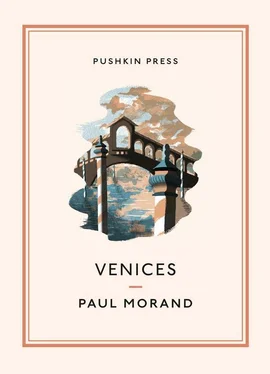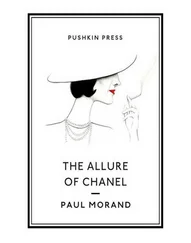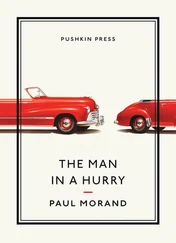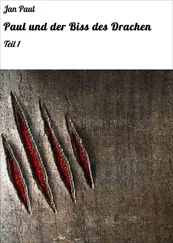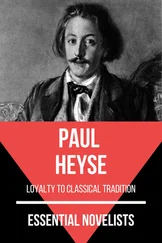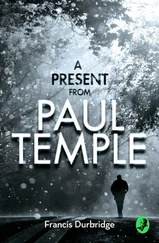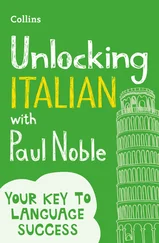Paul Morand - Venices
Здесь есть возможность читать онлайн «Paul Morand - Venices» весь текст электронной книги совершенно бесплатно (целиком полную версию без сокращений). В некоторых случаях можно слушать аудио, скачать через торрент в формате fb2 и присутствует краткое содержание. Год выпуска: 2013, Издательство: Pushkin Collection, Жанр: Современная проза, на английском языке. Описание произведения, (предисловие) а так же отзывы посетителей доступны на портале библиотеки ЛибКат.
- Название:Venices
- Автор:
- Издательство:Pushkin Collection
- Жанр:
- Год:2013
- ISBN:нет данных
- Рейтинг книги:5 / 5. Голосов: 1
-
Избранное:Добавить в избранное
- Отзывы:
-
Ваша оценка:
- 100
- 1
- 2
- 3
- 4
- 5
Venices: краткое содержание, описание и аннотация
Предлагаем к чтению аннотацию, описание, краткое содержание или предисловие (зависит от того, что написал сам автор книги «Venices»). Если вы не нашли необходимую информацию о книге — напишите в комментариях, мы постараемся отыскать её.
Venices — читать онлайн бесплатно полную книгу (весь текст) целиком
Ниже представлен текст книги, разбитый по страницам. Система сохранения места последней прочитанной страницы, позволяет с удобством читать онлайн бесплатно книгу «Venices», без необходимости каждый раз заново искать на чём Вы остановились. Поставьте закладку, и сможете в любой момент перейти на страницу, на которой закончили чтение.
Интервал:
Закладка:
As I walked around, I admired a Venice that was inflamed in red and saffron, and I was reminded of spiny rock-fish, with monstrous heads, emerging from a dish of bouillabaisse.
We wanted to be the first, so that we could see without being seen. The porter examined our invitation cards as carefully as a cashier might look at a large denomination banknote, so many were the forged invitations circulating.
It was too early. B. was not yet dressed; he received us with good humour, his brow beaded in sweat, and in shirtsleeves, for he had not yet donned his Gagliostro costume, being more concerned with decorating his palazzo .
Leaning over the main balcony, which was festooned with girandole, I looked out over the spectators who had been squeezed into the narrow embankments and were hanging on to the cornices along the length of the houses. Only the church of San Geremia, lit tangentially like a backdrop in a theatre, separated the Palazzo Labia from the Grand Canal. In neighbouring windows, rented out for a fortune, heads were leaning out from stacked floors over the empty space below.
All that Venice could muster in the way of boats and small craft was compressed into this junction of the city’s two biggest canals.
The windows of the palazzi were draped in tapestries, and the Aubusson carpets that ran down the steps were soaked in the waters of the Canal.
Through the exhaust fumes, the exhalations of tobacco and the smoke from the open-air rotisseries and burning torches, the projectors beamed down directly upon the first arrivals.
“ Miracolo vivente di sogno e poesia! ” cried a woman selling printed handkerchiefs beneath an open parasol, as she dashed off St Mark lions, one paw resting on the gospel.
Venice that evening added her own note of unreality to the illusions of a festival; the “guests” loomed out of the darkness into the falso giorno of a city that was herself a work of artifice. Lights concealed in corners beamed down as the caterpillar-like procession wended its way forward.
The theme of the spectacle: Marco Polo, the prodigal son, was returning home, bringing back with him to the Adriatic Chinese Chippendales or Turks painted by Liotard.1
Photographers from the world’s press directed their gleaming lenses at the principal performers.
Between two figures of Barbary apes flanked by a Mandarin court, on Tartary junks more gilded than the Bucintoro , a Catalan with waxed moustaches basked in the beams of light. Damascened in silver, the giants followed. And behind them came the goyescas , their roles performed by descendants of Goya’s models, who were given an ovation from the shops below to the roofs above.
The stream of fire that surged the length of these floating altars led towards the entrance to the Cannaregio, where those taking part in the procession set foot on a Savonnerie carpet drenched in the waters of the dark canal; upon disembarking, the women secured their footing with the help of Moorish porters who restored their delicate balance, flanked by two rows of yellow galley slaves, their oars held erect.
Chandeliers from Murano, decorated with real flowers, as delicate as those confections of threaded sugar that adorned Venetian festivals during the Renaissance, lit up the inner courtyard; there people were already bustling about preparing their tableaux vivants of the Beauvais tapestries that hung from the walls, the famous Parties du monde.
Without a care for the morrow, pleasure-loving Europeans, oil-rich Asians, bored Americans, kings from Candide , the jet-setters and a sea of shipowners continued to file past the church on the corner, where San Geremia did his best to restrain his lamentations: “You’re heading straight for the cemetery…” he cried. “Watch out for San Michele!”
The masked apotheosis of that night twenty years ago was a Catherine II, a sky-blue sash across her bust, adorned, like some glacier, with diamonds from the Urals: she is no longer alive. I can see a Louis XIV in gold and white and, like some intoxicating perfume, I can still sniff his victorious presence; his sumptuous garb upset a colleague dressed in designer clothes, his hair as golden as a comet, who followed behind: today they are both dead. A Parisian Petronius who afterwards towered above the crowd of onlookers from the top of his palanquin, the very image of the glorious life, now sleeps in the peace of the graveyard. A bacchante, the English queen of Paris, dressed only in a panther skin, was led along by little Caribs; her steely eyes and her frosty laugh were extinguished forever immediately after her triumph.
Venice is the very last refuge on earth for the curious stroller; the free spectacle is a legacy from the Romans; everything offers the opportunity for amusement, the woman at her doorway whipping up mayonnaise, the Englishwoman at her easel, the solitary singer sitting on a gondoliers’ bench, a child kicking his ball among the nibbling pigeons…
Leaving the Labia, the festival extended out on to the square. B— had wanted it to be so; in order to return to our hotel, in the direction of the station, we had to cross the Campo San Geremia; there everything danced, apart from the houses. Acrobats were reconstructing the famous pyramid, known as The Strength of Hercules , after the wooden model in the Correr Museum. The masked beauties had begun to mix with the crowd, who admired them without any envy; for the natural democracy of the Mediterranean people makes no distinction between the piano nobile and the pavement. (The first time I had observed this for myself was in the Appenines, at Vigoleno; the villagers had invaded the castle where Maria passed from the arms of her gardener into those of her chauffeur.)
Above our heads, a tight-rope walker dressed as a bear edged from one rooftop to another; tumblers and acrobats stood in pyramids, balancing at the level of the guttering; the prattle of the street salesmen and the jeers of the circus clowns drowned the splashing of the jousters on the canal and the shouts of the acrobats on their stilts. Jean de Castellane, emerging from a ball at the Hôtel de Ville would mutter wearily: “It’s like the street… with a roof on top.” In Venice, the street is like a palazzo without a roof.
It took twenty years for the Palazzo Labia, which was sold, to become a sad, peninsular administrative building.
Since these lines were written, the moving spirit of the resurgent Venice that evening has also passed on to the land of shadows.
After the tableaux vivants come the still-lifes.
1954 THE GIORGIONE EXHIBITION
GIORGIONE… When I was twenty, people swore by him alone; Berenson and D’Annunzio had just discovered him. Everything was suddenly attributed to this genius who died very young; works by Titian, Cima de Conegliano, Sebastiano del Piombo, Palma the Elder and Lotto were seized and ascribed to this great unknown artist. My earliest savings were spent purchasing books by B.B. in which one unexpectedly discovered in Giorgione pre-Poussin landscapes, picturesque music, romanticism ( The Tempest ), the sensitivity of chiaroscuro, the Debussy-like atmosphere, created by shepherds with their theorbos, and the veils that Isadora Duncan wore; I remember a devout pilgrimage to Castelfranco (not daring to admit my disappointment at seeing his Madonna ), in one of the earliest Fords…
Today it is the Mostra in Venice. In his introduction to the exhibition catalogue, Pietro Zampetti barely conceals his disillusionment. What remains of Giorgione? Three authentic portraits! What a battleground it’s been! The critics can only agree about the Pala at Castelfranco, the Three Philosophers in Vienna and the Tempest from the Ospedale Civile; after one and a half centuries the Judith in Leningrad has been snatched by Raphael and restored to Giorgione for the time being, but doubts persist as to the Young Man in Berlin, the Young Woman in Vienna, the Madonna at the Ashmolean, the Sleeping Venus in Dresden, and the Man with an Arrow in Vienna. As for the Concert , there is talk of a collaboration with Titian… The Sick Man may be by Leonardo. Even the Three Ages in the Pitti Palace are ascribed to Lotto; the most famous paintings by Giorgione are lost… others are attributed to the friend who shared his studio, Titian, with whom he had collaborated when they were pupils of Bellini’s, and who, in his case, was lucky enough not to die at the age of thirty-three.
Читать дальшеИнтервал:
Закладка:
Похожие книги на «Venices»
Представляем Вашему вниманию похожие книги на «Venices» списком для выбора. Мы отобрали схожую по названию и смыслу литературу в надежде предоставить читателям больше вариантов отыскать новые, интересные, ещё непрочитанные произведения.
Обсуждение, отзывы о книге «Venices» и просто собственные мнения читателей. Оставьте ваши комментарии, напишите, что Вы думаете о произведении, его смысле или главных героях. Укажите что конкретно понравилось, а что нет, и почему Вы так считаете.
